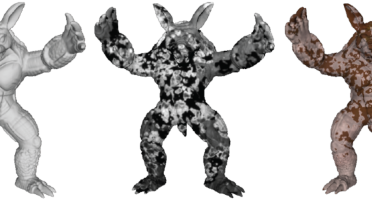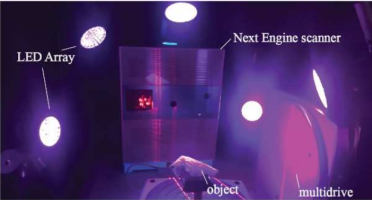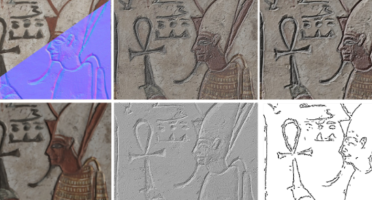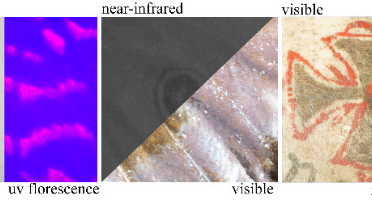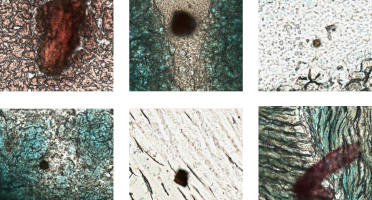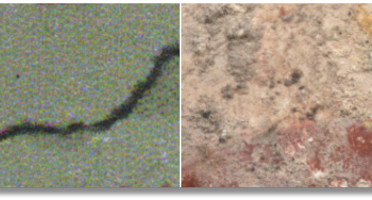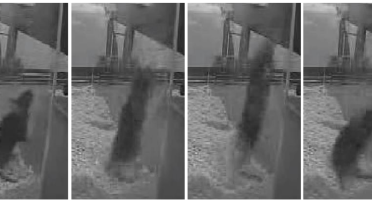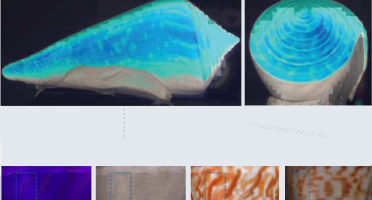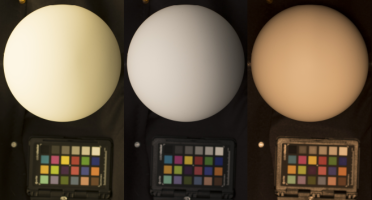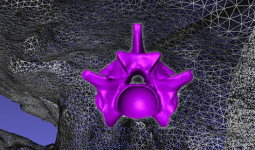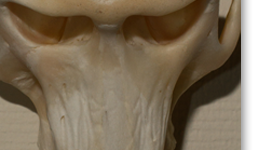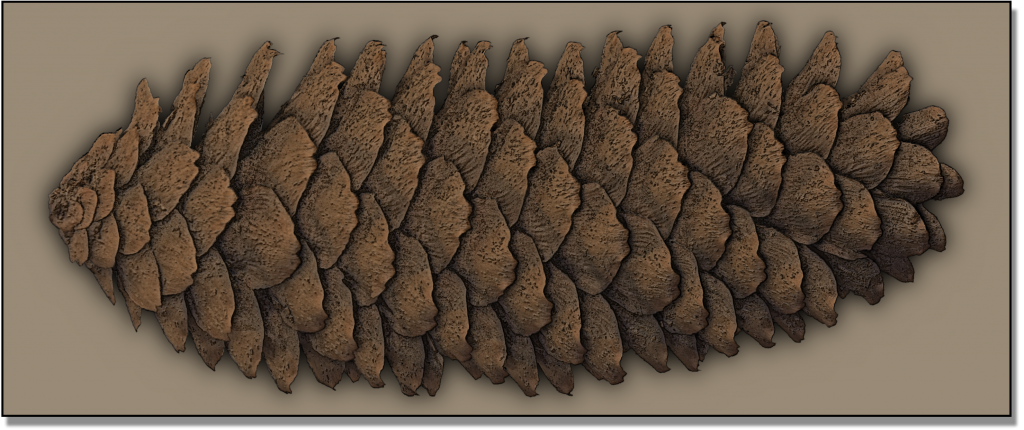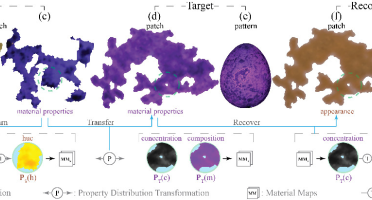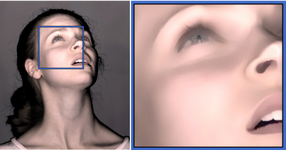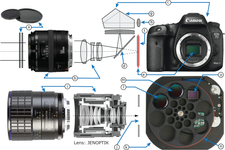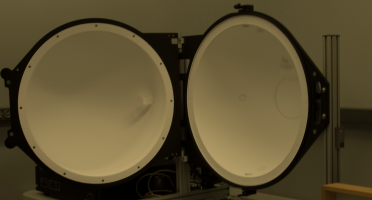
Graphics Imaging & Light Measurement Laboratory, Barnard College, Columbia University.
The Graphics Imaging & Light Measurement lab develops new imaging techniques and analysis algorithms in Computer Graphics and Vision for applications in Life Science, Bio-Medical Research and Archaeology. Recent developments in deep learning, combined with the recent influx of affordable optics-based imaging technology is making a wide range of new data formats available to researchers for scientific analysis of real objects.
As these technologies become more prevalent, scientists are discovering the need for new forms of investigation never before considered in computer graphics research. These examples are opportunities to re-think several problems in computer graphics and develop new ways of seeing, representing, and navigating information.
& Reconstruction Pipelines
in Complex Materials
Research Areas
Practical Applications:
Projects
Cancer Tumor & Biomarker Detection: Focuses on AI research in the detection of metastatic cancer in tissue samples.
Animal behavior phenotyping and modeling neurological disorders: Develops deep learning models for animal behavior phenotyping for preclinical research associated with neurological disorders.
High Volume Data Acquisition and Reconstruction Pipelines: Develops efficient 3D acquisition systems that use machine learning to reconstruct artifacts.
Analyzing biological materials: Investigates multispectral imaging techniques to analyze shape and appearance in biological materials.
Simulating Optical Interactions in Complex Materials: Models molecular and atomic level interactions in proteins for material identification.
Develops multi-spectral imaging and 3D printing techniques for analyzing complex shapes and materials. Collaborators include the UF College of Education and The Florida Museum of Natural History.
Develops non-invasive optical capture techniques and rendering algorithms to digitize biological specimens from rare collections.
Introduces hardware and software systems to assists archeologists at the Akrotiri Laboratory of Wall Paintings reconstruct the Thera Frescos.
Investigates non-photorealistic illustrations that reveal subtle surface detail using RGBN Images that store per pixel color and a surface normals.
About the PI
Dr. Toler-Franklin is an Assistant Professor in the Computer Science Department at Barnard College, Columbia University where she directs the Graphics, Imaging & Light Measurement Laboratory (GILMLab). Dr. Toler-Franklin earned a Ph.D. in Computer Science from Princeton University. She obtained a Master of Science degree from the Cornell University Program of Computer Graphics and a Bachelor of Architecture degree from Cornell University.
Prior to joining the faculty at Columbia, Dr. Toler-Franklin was an Assistant Professor at the University of Florida. She was a University of California President’s Postdoctoral Fellow in the Computer Science Department at UC Davis and a researcher at the CITRIS Banatao Institute at UC Berkeley. Dr. Toler-Franklin has considerable industry experience, having worked at Autodesk, Adobe and Google.
Dr. Toler-Franklin’s research areas are Computer Graphics and Vision, focusing on 3D Data Acquisition, Physically-Based Appearance Modeling, Imaging Spectrometry, Machine Learning, Matching Algorithms and Non-Photorealistic Rendering. Dr. Toler-Franklin’s algorithms have been deployed in real-world settings for practical applications in Bio-Diversity, Bio-Medical Research and Archaeology.
Her work has fostered international collaborations with researchers in the fields of paleontology, archaeology, museum conservation and biological imaging. Dr. Toler-Franklin was awarded the 2013 NSF iDigBio Visiting Scholar Award to support her current projects developing new optical capture techniques and image processing algorithms to analyze biological specimens from rare collections.
GILMLab Publications
Shashank Ranjan, Corey Toler-Franklin.arXiv:2112.15589. https://arxiv.org/abs/2112.15589
Corey Toler-Franklin, Shashank Ranjan.arXiv:2109.00780. https://arxiv.org/abs/2109.00780
Qingchao Zhang, Coy D. Heldermon, Corey Toler-Franklin. Advances in Visual Computing. ISVC 2020. Lecture Notes in Computer Science. 2020 October; 12509. DOI: https://doi.org/10.1007/978-3-030-64559-5_11
Collaborators
Gainesville Florida
Gainesville Florida
Santorini, Greece
Yale University
Florida Museum of Natural History
University of Florida Health
Florida Museum of Natural History
American Museum of Natural History, Lehman College, CUNY, CUNY Graduate Center
Facilities and Equipment
The Graphics Imaging & Light Measurement Lab (GILMLab) is equipped with specialized optical imaging equipment for measuring material appearance. Custom-built equipment includes multispectral imagers, spectrometers, radiometers, a microscopy system and a gonioreflectometer. Other devices include displays, VR/AR systems, 3D scanners, and a 3D printer.

Graphics Develop algorithms to process, visualize and analyze complex datasets from multiple imaging modalities.
Imaging Capture the shape and physical appearance of objects under multiple lighting parameters and across multiple spectral bands.
Light Measurements Lab Measure physically-based material light reflectance models and record the spectral distribution of light sources.
Directions
Address
GILMLab is located at 3009 Broadway, New York, NY 10027
USA
Phone: (510) 449-6033
Directions
GILMLab is located on the Upper West Side of Manhattan between 116th and 120th Streets along the west side of Broadway.
Parking
Limited street parking is available in the neighborhood. There are metered spots (parkmobile app) and side streets with alternate side parking at no cost. Meters are not in effect on Saturdays and Sundays unless noted.
Contact
Send questions or comments to ct3219@columbia.edu
